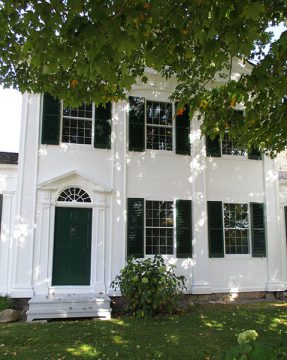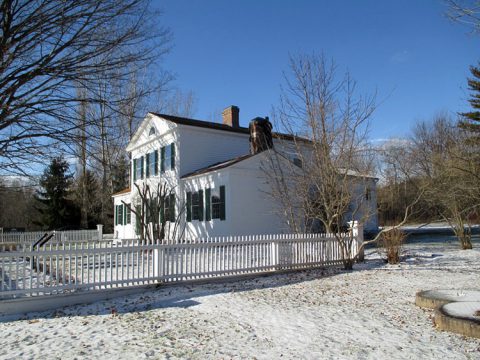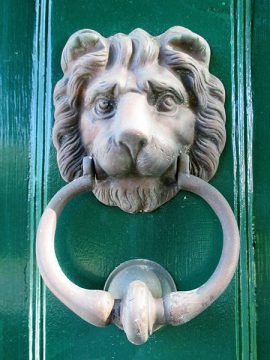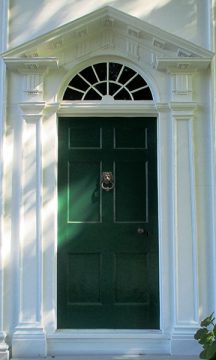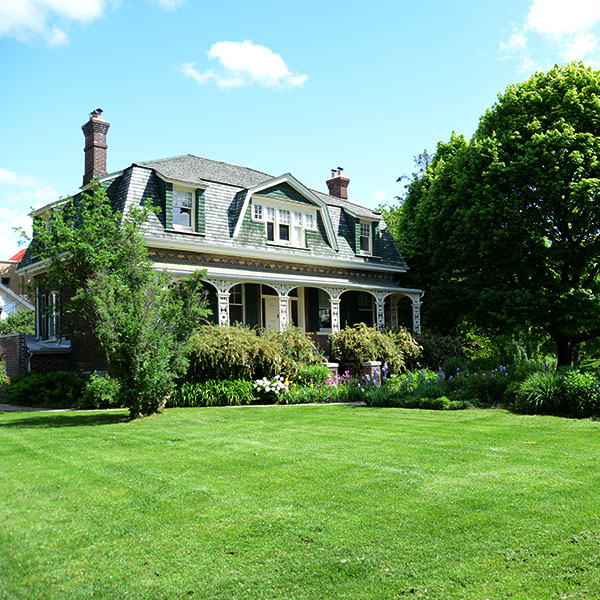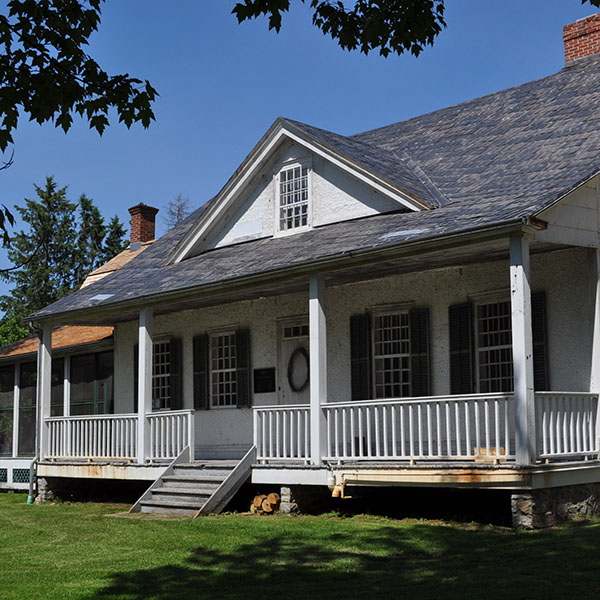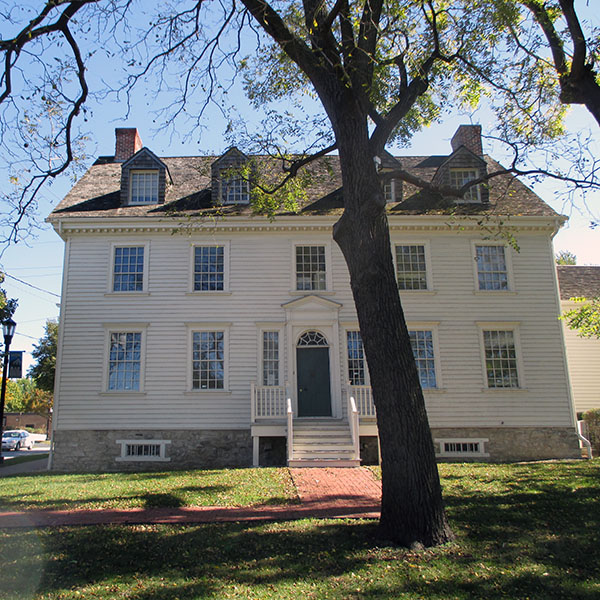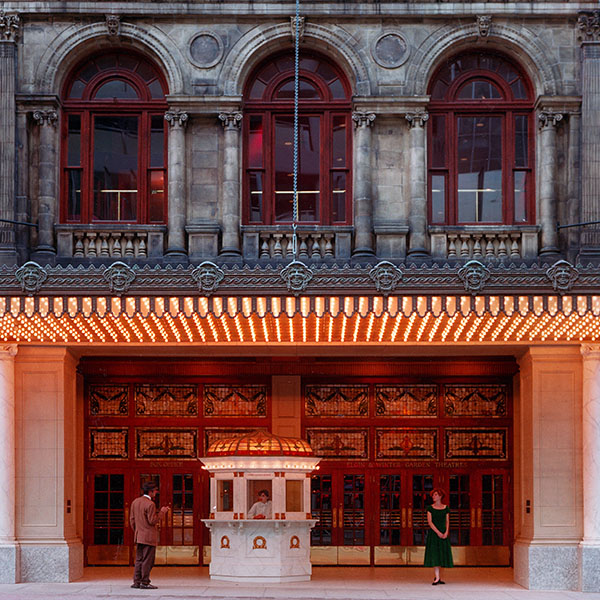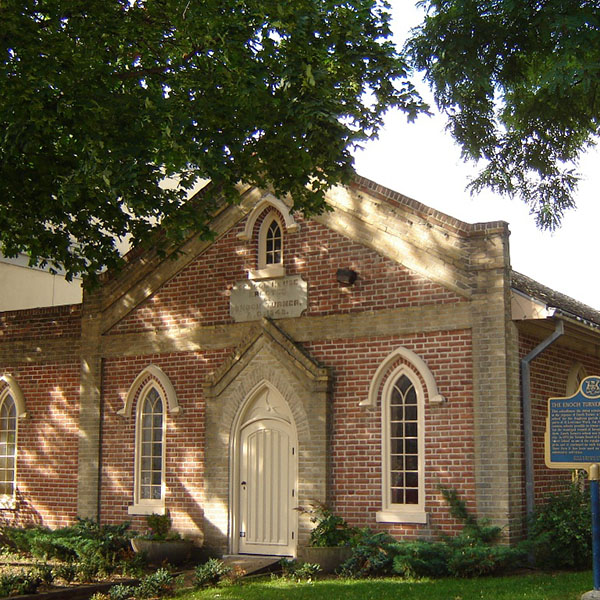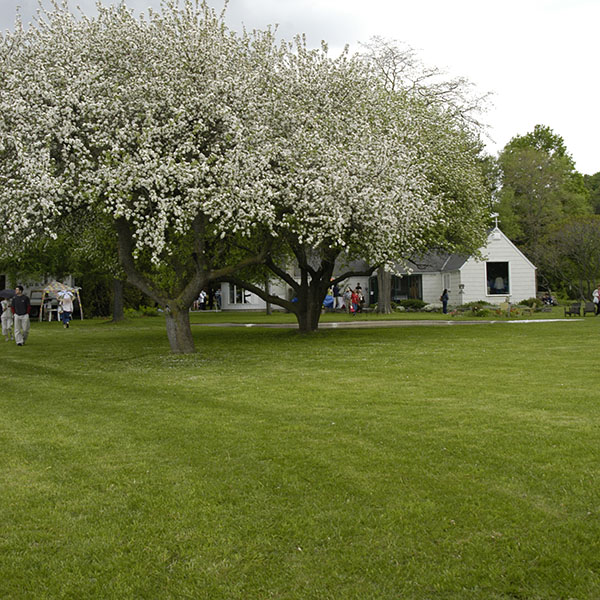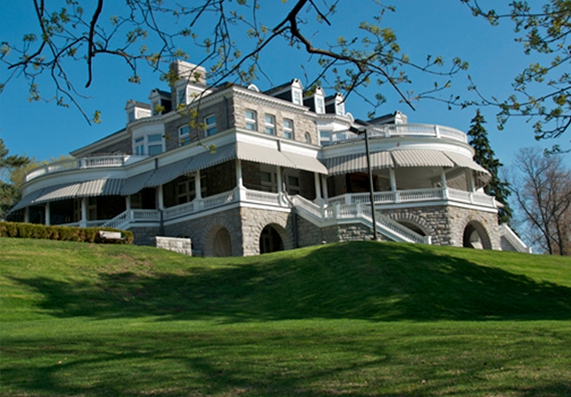Menu
Eliakim Barnum was in his early twenties when he emigrated from the United States in 1807. He chose to settle in Haldimand Township near the village of Grafton (then called Haldimand) on the north shore of Lake Ontario, a few miles east of present-day Cobourg. By 1819, Barnum owned over 364 hectares (900 acres) of land, a thriving milling business, a tavern and a distillery. His business success made him an influential citizen in early Haldimand Township. A loyal Tory, Barnum was a Justice of the Peace, a founder of St. George's Anglican Church in Grafton and Lieutenant-Colonel of the local militia. He also helped start the first school in the township in 1820 – perhaps because he and his wife Hannah had five children. His oldest son, Smith Barnum, would become the first Warden of the United Counties of Northumberland and Durham in 1849.
In 1819, Barnum built a stylish house that stands today as one of Ontario's finest examples of Neo-Classical architecture. The building's composition is formal, with two symmetrical wings flanking a central temple structure. The façade of Barnum House is articulated with pilasters linked by elliptical arches. Its architectural detail is extensive and delicately scaled. Neo-Classical houses were popular in New England in the early 19th century. American experiments with the style were, in turn, inspired by British examples, particularly the work of the leading proponents of Neo-Classical architects Robert and James Adam.
The house remained in the ownership of the Barnum family until 1917, when it was sold to Harry Prentice. The significance of the house was recognized by the Architectural Conservancy of Ontario (ACO), a private organization founded in 1933 to preserve the province's architectural heritage. The ACO acquired Barnum House from the Prentice family in 1940, refurbished it in its early style and opened it to the public as the province's first period house museum. In 1958, the ACO presented the house to the Township of Haldimand, which continued to operate it as a museum until 1982 when ownership was transferred to the Ontario Heritage Trust.
The Trust has conducted an extensive restoration of Barnum House. Original paint colours and wallpaper were reproduced to show Eliakim and Hannah's decor of the 1820-40 period. At the rear of the house, where an original drive shed once stood, a two-storey addition was constructed to house facilities necessary to support the house as a museum and community heritage resource centre. In June 1991, the house was reopened to the public. Barnum House was designated a National Historic Site in 1959.


